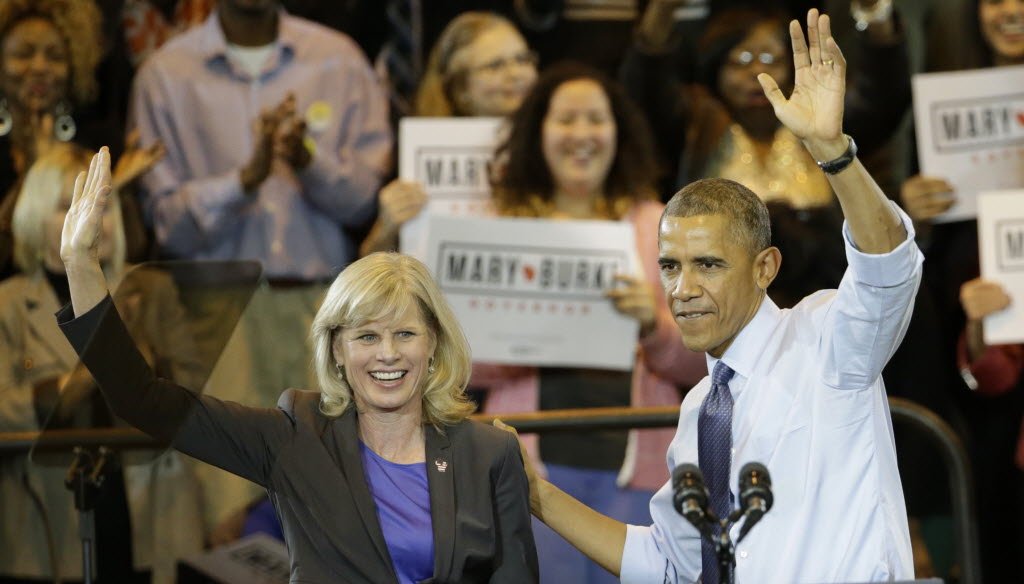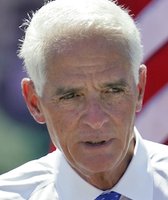Get PolitiFact in your inbox.

As Obama nears the end of his first term, we're checking to see if he's kept his campaign promises. (2012 AP Photo)
As we finish our Obameter updates on President Barack Obama's 2008 campaign promises, we wanted to highlight our observations and reflections on Obama's vision of government, the individual promises and the journalistic challenge of diving into the bureaucracy to determine whether the pledge has been fulfilled.
Here are the reflections of the PolitiFact staff:
Bill Adair, PolitiFact editor: What is remarkable to me about the Obameter is how the promises reflect Obama's vision that when there's a problem, government should fix it. With promises big and small, you can see that his vision is that government should play an active role anytime there's a problem, whether it's the need to revitalize rural communities, improve the treatment of autistic children or encourage "regional clusters" in city planning.
Seventeen years after Bill Clinton declared that "the era of big government is over," the Obameter and its 508 promises are testament to a different vision, that government — through hundreds of laws and programs and incentives — should take the lead in solving the nation's problems.
Angie Drobnic Holan, deputy PolitiFact editor: What I see in the Obameter is how different a candidate’s vision can be from what actually ends up happening. When Obama’s campaign staff was putting together campaign documents, they (like the rest of us) had no clue a major economic recession was about to grab the country by the throat. The Great Recession has curtailed some of Obama’s ambitions, especially promises involving discretionary spending.
Meanwhile, Obama’s pledge to create a foreclosure prevention fund to help homeowners didn’t work out at all as expected. In 2007, Obama pledged to fund it to the tune of $10 billion. Back then, the country’s housing problems were thought to be fairly manageable. Obama ended up putting in much more than he promised, about $75 billion, when it became clear foreclosures and other housing problems were dragging down the entire U.S. economy.
But that larger sum still didn’t do the job: His housing program fell far short of its own goal of modifying 9 million mortgages. We rated the pledge Promise Broken, and housing remains of enduring concern as the economy trudges forward.
Louis Jacobson, senior writer: What is impressive — or, in retrospect, insanely naive — is the extent to which Barack Obama, circa 2008, was willing to put his policy agenda into writing, where it can serve as grist for any number of disappointed Americans.
As we have noted previously, Obama’s 508 promises from 2008 include such down-in-the-weeds pledges as "support regional innovation clusters" (Promise Kept) "increase funding for programs that conserve lands and habitat for select species such as the Osceola turkey" (Promise Kept), "attract foreign art talent" (Compromise), and "seek code of conduct for space-faring nations" (Compromise). Apparently, Obama and his staff thought that wooing the artist and astronaut vote was crucial to his chances of winning in 2008 — and that making the sale couldn’t be entrusted to off-the-cuff assurances by mid level staffers.
We haven’t finished assembling Obama’s promise list for the 2012 edition of the Obameter, but from what we’ve seen so far, the number of promises will be just a fraction of what he pledged in 2008. And if anything, Mitt Romney’s list of pre-election promises was even smaller than Obama’s. Whether it’s due to the existence of the Obameter or just simple self-preservation, the idea of a 508-promise presidential agenda appears to be headed to history’s dustbin.
Becky Bowers, staff writer: As we update our Obameter, two things strike me about the Obama administration’s efforts. One, the stimulus bill and the health care law were packed with measures large and small — most that you’ve never heard of — that set in motion the president’s agenda. (How many times did I pick up an obscure promise and find that, indeed, it appeared in the Recovery Act or the Affordable Care Act? Felt like nearly every time.)
Second, while Obama wants to use government to solve social problems, it’s not necessarily with larger government. Rather, it’s sometimes government as stone soup. Government points to an issue, brings together people who care, and offers enough money to get everyone else to pitch in. It’s a high-profile government, but in some surprising ways a leaner one.
Molly Moorhead, staff writer: What is most eye-opening to me about working on the Obameter is how complex the factors are that lead to President Obama’s pledges either being fulfilled or withering on the vine. In some cases where we rate a promise broken, readers will respond that the "do-nothing Congress" is to blame or that the Republican-led House is determined to stymie the president at any cost, on any issue. Sometimes our reporting shows that’s true. Consider most any promise on the stalled subject of tax reform.
But in other cases, we find Obama’s promises are fulfilled despite little or no effort by the White House. For example, Obama vowed to persuade the European Union to halt credit guarantees to Iran. That happened this year — but the Europeans did it on their own.
To me, it all creates a vivid illustration of the vastness of the federal bureaucracy, the entrenchment of partisan politics and frequently, the stubborn dysfunction in Washington.
J.B. Wogan, intern: After writing about dozens of campaign promises, you start to wonder what the candidate was thinking, especially on the really ambitious commitments.
Did Obama actually believe he could establish universal health care, create a cap-and-trade system, kill Osama bin Laden, wind down the war in Iraq and reform immigration law, all in just four years?
In retrospect, the breadth of his first-term campaign agenda seems a little unrealistic.
Then again, we expect bold rhetoric from our politicians. After all, candidates promise what they think voters want. That’s part of the Obameter’s value: It’s a reflection of what a candidate had to say in order to get elected in 2008. With Obama, we got hundreds of mini action plans on genocide in Darfur, high school graduation rates and electronic health records; on collective bargaining rights, biofuels and border security; on green jobs, same-sex marriage and community-oriented policing. A third of his pledges fell into one of just four categories: energy, foreign policy, education and health care.
As we measure his success (about two-thirds either kept or partially kept, as of this writing), we are comparing his achievements with the priorities and aspirations of politics from four years ago. The Obameter doesn’t just hold the president accountable for what he promised to do — it also reminds us of what we thought we wanted when we elected him.
Our Sources
See individual promises for complete sources.
















































